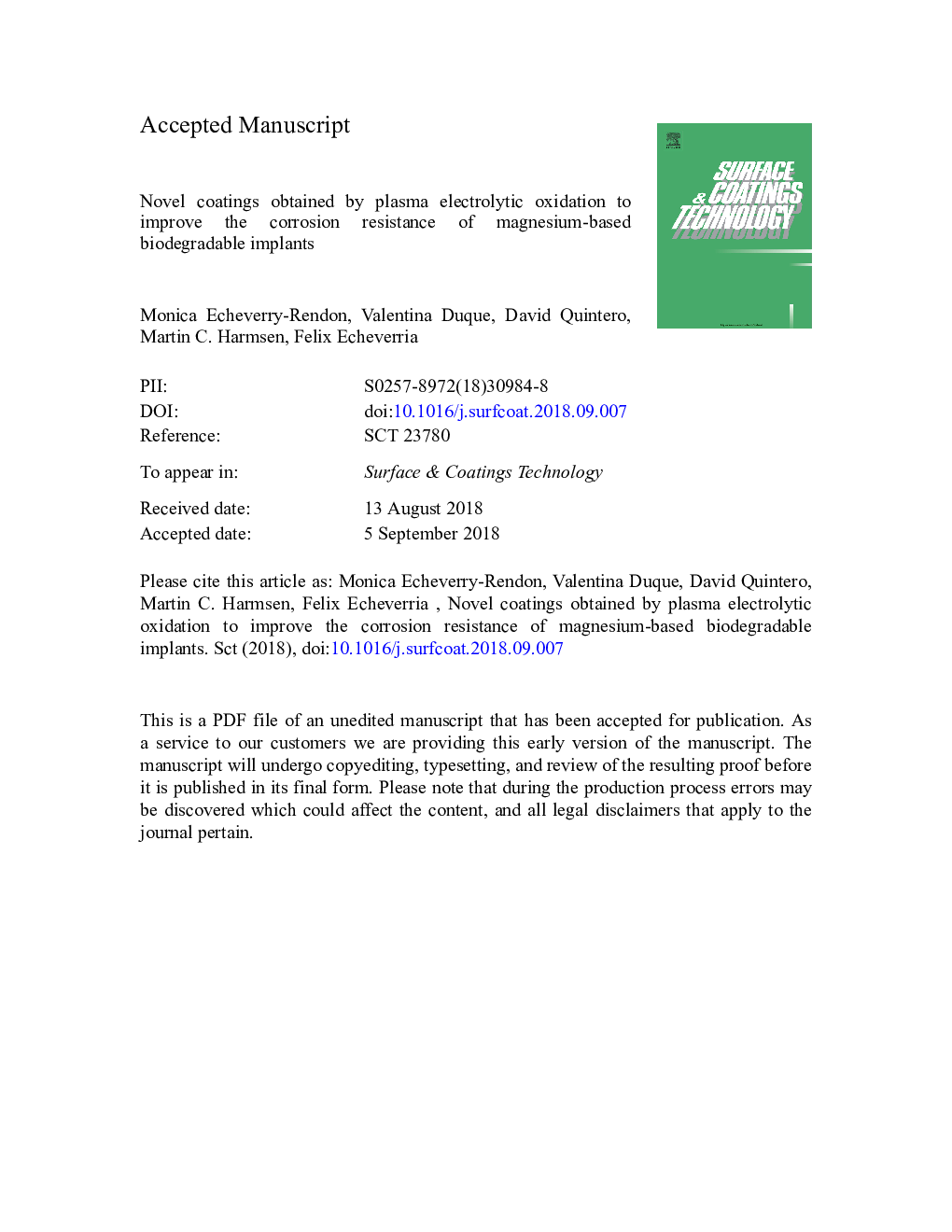| Article ID | Journal | Published Year | Pages | File Type |
|---|---|---|---|---|
| 10156079 | Surface and Coatings Technology | 2018 | 32 Pages |
Abstract
Due its good properties, Magnesium (Mg) is a metal widely used in industrial applications and in biomedical field. However Mg is highly reactive and its wear and corrosion resistance are low. Plasma electrolytic oxidation (PEO), also known as microarc oxidation (MAO), is a favorable technique which can be used to produce coatings of MgO/Mg(OH)2 in a controlled way with specific morphology, thickness and composition by the modification of the operation parameters of the system such as voltage, current density, time and electrolytic solution. The aim of this paper was to study the effect of some additives in the base electrolyte solution composed of silicate and potassium hydroxide. As additives, sodium fluoride was compared with two unreported organics compounds, hexamethylenetetramine and mannitol. Both galvanostatic and potentiostatic modes were used for anodization. Voltage-time and current density-time curves were correlated with SEM images of the surfaces and cross-sections in order to know the effect of anodizing parameters on the thickness and morphology of the coatings. Finally it was possible to conclude that coatings obtained by addition of sodium fluoride were compact and for hexamethylenetetramine and mannitol the coatings consisted of interconnected pores. Additionally it was observed that anodization in electrolytes containing NaF induced the formation of unreported multi-layered films whilst for the organic additives the anodic coatings had the typical bilayer morphology, an internal barrier layer beneath an outer porous layer.
Related Topics
Physical Sciences and Engineering
Materials Science
Nanotechnology
Authors
Monica Echeverry-Rendon, Valentina Duque, David Quintero, Martin C. Harmsen, Felix Echeverria,
